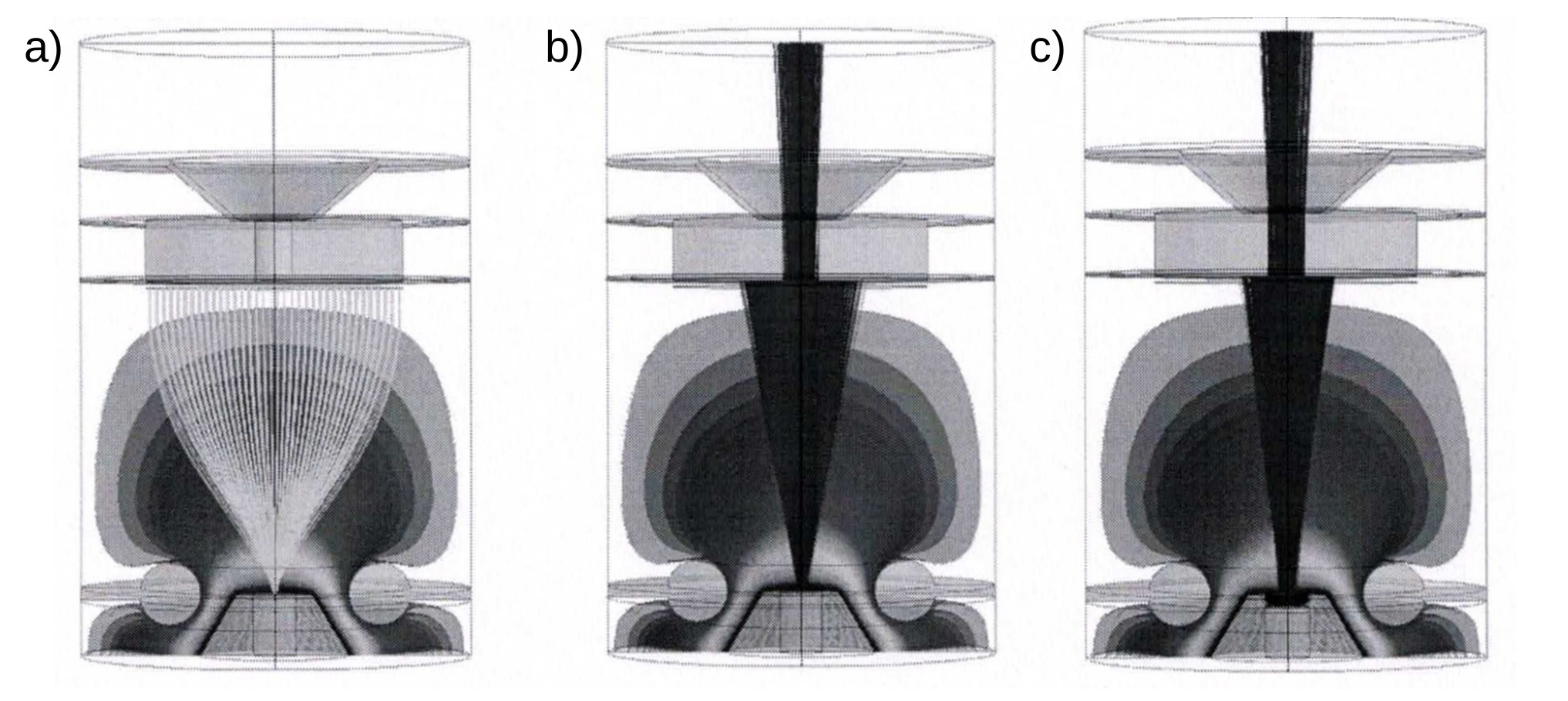
Efficient source of negative ions
A novel device for the generation of negative ion beams by means of alkali metal sputtering is suggested, which exhibits superior performance characteristics. Its design enables a simple and cheap fabrication, while system maintenance is easy.
Challenge
The generation of negative ions can be utilized by alkali metal sputtering. Thereby, a beam of positively charged alkali metal ions (typically Cs) is accelerated by an electric field in the kV range and impinges on a (conically shaped) target, which comprises the material of interest. Negative ions are generated by sputter erosion. Depending on the electrode configuration, method of extraction and energy distribution of the sputter process, the negative ion beam can have a high aberration and/or high emittance. Typically, Cs-sputter negative ion sources exhibit a conically shaped target, while the beam of positively charged alkali metal ions is generated by diffusion through a ring-shaped ionizer. Cylindrical ionizers, with the cylinder axis acting as central axis of the ion source, are also known. Moreover, ion sources with an annular ionizer have been reported, in which the ionizer (with a planar surface) is located behind the sputter plane. However, the ionizer surface is not arranged opposite to the target, while the negative ions are not extracted by and through the ionizer.
Our Solution
The present invention describes a novel source for the generation of negative ions (Fig. 1). The invention picks up the aforementioned concepts and yields a set of important improvements (see section Advantages). According to the invention, the normal of the planar ionizer surface is coinciding with the central axis of the (rotationally symmetrical) system. The (planar) ionizer surface is configured perpendicular to the central axis. The central axis, which crosses the ionizer surface, corresponds to the longitudinal axis of the generated negative ion beam. The center of the planar ionizer surface is at the central axis. Some characteristics of the present ion source are shown in Fig. 2.
 Fig. 1: Design of the new Cs-sputter negative ion source. In a) the head of the ion source is shown, while b) shows the backside of the new alkali metal-sputter negative ion source (adaptation after patent application).
Fig. 1: Design of the new Cs-sputter negative ion source. In a) the head of the ion source is shown, while b) shows the backside of the new alkali metal-sputter negative ion source (adaptation after patent application).
 Fig. 2: Equipotential lines and particle trajectories of the positive Cs ions a) and negative sputtered ions b) at the position of the cathode at the edge of the cathode bed. In c) the equipotential lines and particle trajectories of the negative sputtered ions are shown, for the case that the cathode is arranged 2 mm backward in the cathode bed.
Fig. 2: Equipotential lines and particle trajectories of the positive Cs ions a) and negative sputtered ions b) at the position of the cathode at the edge of the cathode bed. In c) the equipotential lines and particle trajectories of the negative sputtered ions are shown, for the case that the cathode is arranged 2 mm backward in the cathode bed.
Advantages
- Increased cathode voltage
- More energetic alkali metal ions and higher sputter rates
- Larger extracted beams of negative ions
- No arc discharges
- Stable ion source structure (no thermally induced tilting and bending of the components)
- Improved versatility/flexibility (adjustability of the ion source in connection with different applications)
- Automatic adjustement of the ionizer surface upon assembly of the ion source
- Simple and cheap fabrication
- Easy replacement and cleaning of the components (in particular the ionizer surface)
Applications
- Ion implantation
- Plasma etching and thrusters
- Mass spectrometry
- Particle accelerators
- Additional heating in nuclear fusion
Development Status
A prototype is existing, which functionality has been successfully approved.
Patent Status
US patent granted: US11031205B1
Patent holder: Georg-August-University of Göttingen Public Law Foundation.
Contact
Dr. Maria Kamper
Patent Manager Technology
E-Mail: mkamper(at)sciencebridge.de
Tel.: +49 551 30724 153
Reference: CPA-2183-SUG
